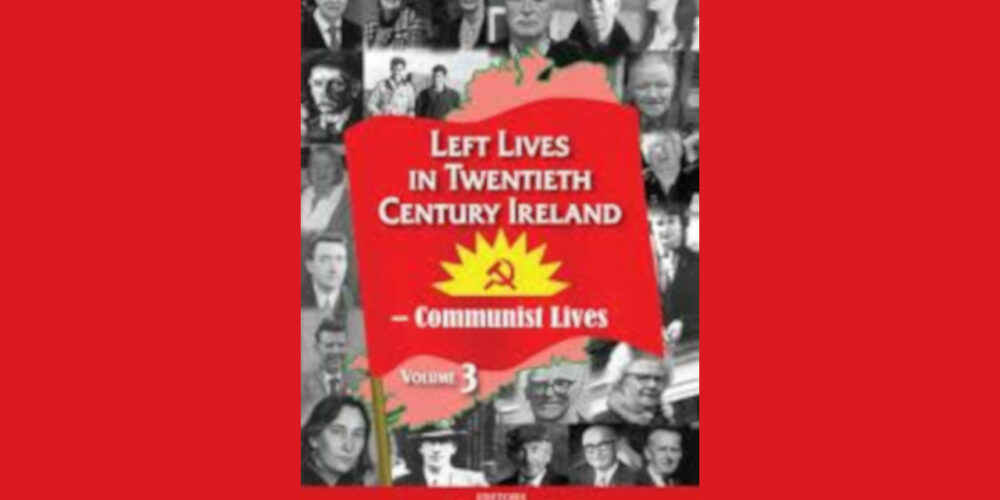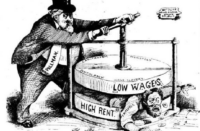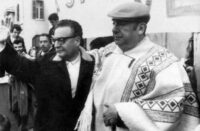■ Francis Devine and Patrick Smylie (editors), Left Lives in Twentieth-Century Ireland, vol. 3: Communist Lives, Dublin: Umiskin Press, 2020.
The Communist Party of Ireland will celebrate a hundred years of Irish communism in 2021. This book is a welcome contribution to the centenary of the party.
After the counter-revolutions in eastern Europe in 1989–1991 it became safe for historians to write about communism in Ireland, believing—wrongly—that it was a spent force. Pivotal research into the CPI, especially in its first few decades, has been done by Emmet O’Connor, Charlie McGuire, Seán Byers, Adrian Grant and other historians to show the contribution the party made to Irish politics—notwithstanding the hatchet job done by Matt Treacy.
This book, as well as some others, gives an insight into how the party has not merely survived but has grown since the ending of the Soviet Union. The CPI in its first incarnation owed its existence as much to Irish history as to the October Revolution. The United Irishmen, the IRB and Connolly’s ISRP all form the foundations of the Irish party as much as the Bolshevik model.
It was in the respite of the Truce during the Irish Revolution that the CPI was formed, in an attempt to fuse the republican and socialist struggles into one movement under Marxist-Leninist direction.
What is also interesting to note is that the founders of the CPI were young and even inexperienced: Roddy Connolly was only twenty-one when he became the first general secretary of the party, and Seán McLoughlin only twenty-four.
After the counter-revolution of 1922–23 and the consolidation of Irish capitalism—based on a subservient relationship with British imperialism and prevented from developing as a national capitalism because of this and partition—the CPI and the revolutionary left were forced to struggle on the outside of mainstream politics. After a period of being stood down, the party re-formed in 1933.
What cannot be denied is that the CPI was a vital component of the left in the 1930s. The left at that time was largely reduced to the CPI, the left wing in the IRA, and the occasional left Labour member. It was these forces that engaged in the struggle for an Irish republic of a new type with the formation of the Republican Congress, land agitation, trade union battles, housing struggles, and the fight against the Blueshirts and clerical domination, culminating with the Connolly Column in Spain.
It was the CPI’s lone voice that spoke out about clerical abuse in the industrial schools, and Irish communists put the politics of unity into action when they organised Catholic and Protestant workers in the outdoor relief (unemployment assistance) strike in 1932. Small wonder that Jimmy Gralton was deported by the Irish state at a time when Irish communists suffered assaults and intimidation.
Special note needs to be made of communist women, some of whom are profiled in the book. The CPI had the first female leader of an Irish political party, as Charlie McGuire has covered elsewhere. The founding meeting of the Irish-Soviet Friendship Society elected an all-woman committee. The role of communist women in housing struggles, civil rights campaigns, workers’ struggles, access to nursery schools and women’s centres are all covered in the book.
The CPI was a party as much of the working class as it was for the working class. Unlike other left-wing fractions, which spent their time with the latest trendy issue in the university colleges, the CPI organised in working-class communities. The pivotal role of communists in workers’ struggles comes across in the massive emphasis put on trade union activism within the party, particularly in Belfast. The CPI was in the forefront of the unemployed movement and the civil rights movement in the North as well as internationalist struggles in solidarity with the Soviet Union, Cuba, and Viet Nam.
More recently the party has played a leading role as an ideological vanguard, with the Right2Water struggle, the Trade Union Left Forum, the Peadar O’Donnell Socialist Republican Forum and the People’s Dáil being areas of party focus. Socialist Voice and other media are influential outlets for the party, as is Connolly Books. The CPI has campaigned for Irish independence from British, EU and US imperialism and in countless other causes in recent years. The Connolly Youth Movement has played a vital role in youth politics.
What comes across in the book is that it has not been easy to be an Irish communist. Anti-communism, of the “left” and right varieties, remains an obstacle. Confounding its critics, the CPI has shown in the past three decades especially that we are an independent and principled party that will continue to fight for our class. A hundred years later we can look at our history with pride and continue the fight.
“When I am asked if I’m ever sorry I took this difficult road, I reply that my life shows that I had chosen correctly. To be a Communist means to live for others.”
Lillian Murphy






